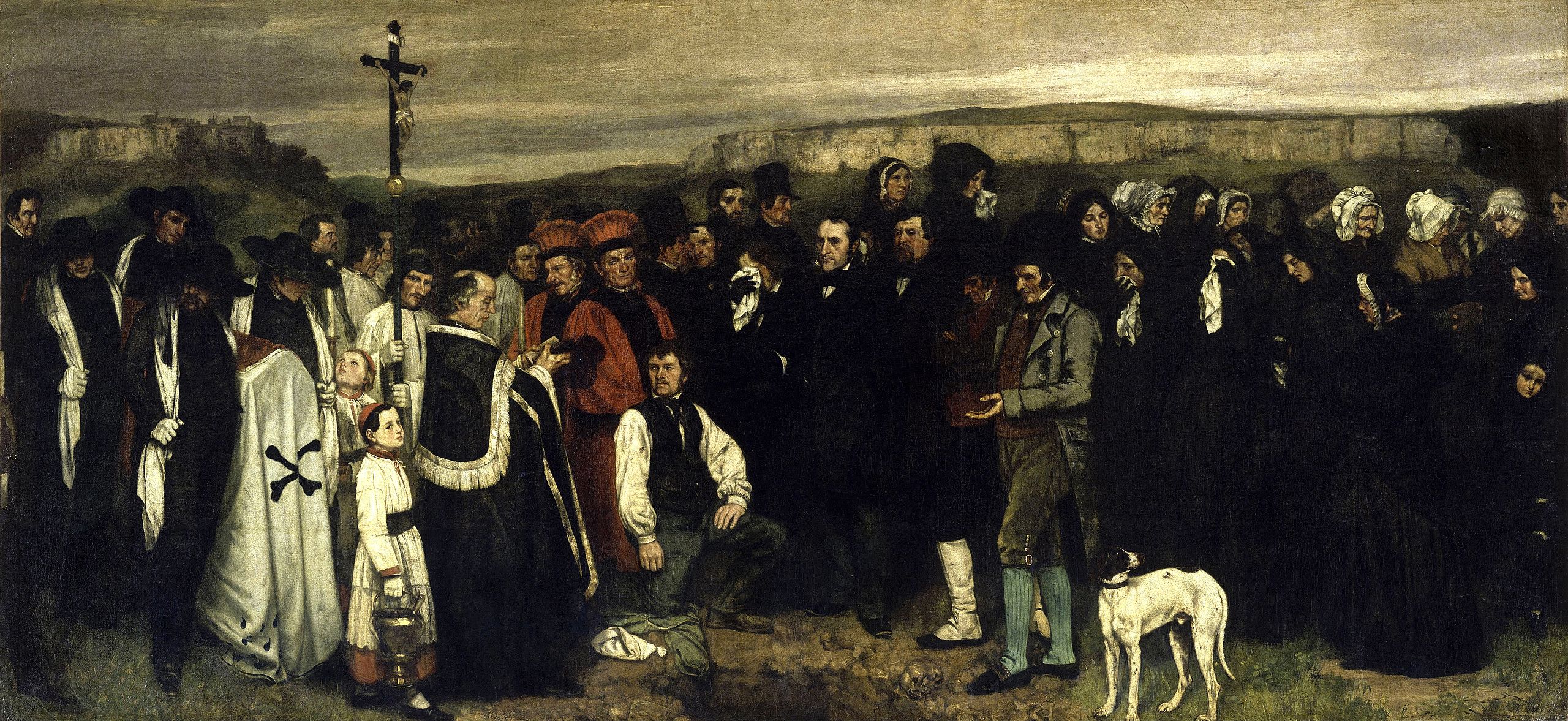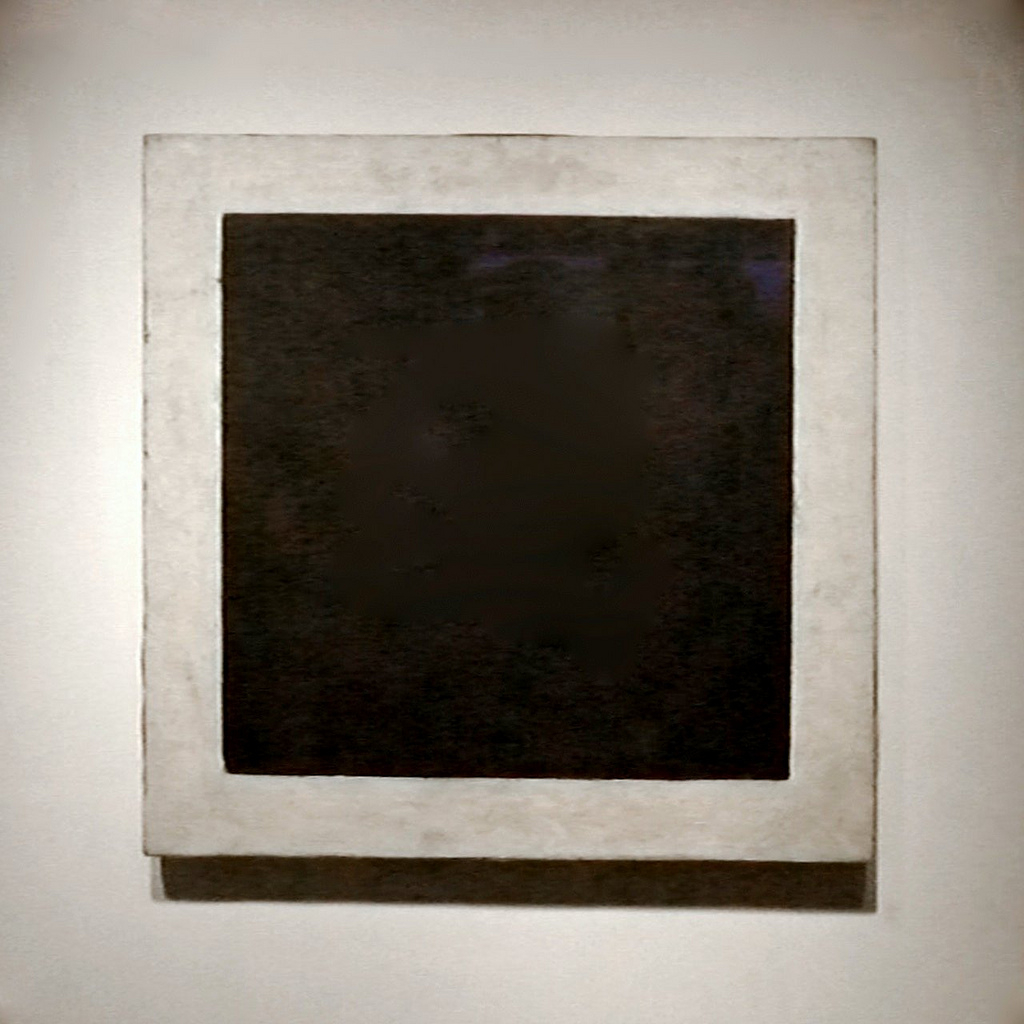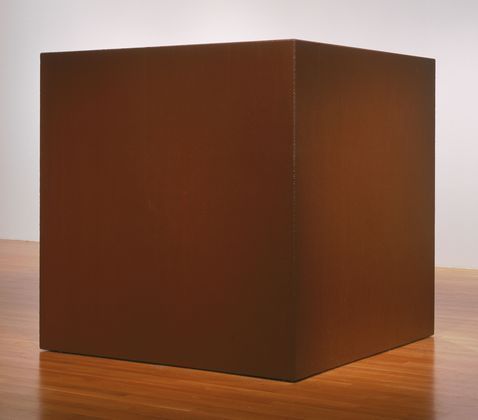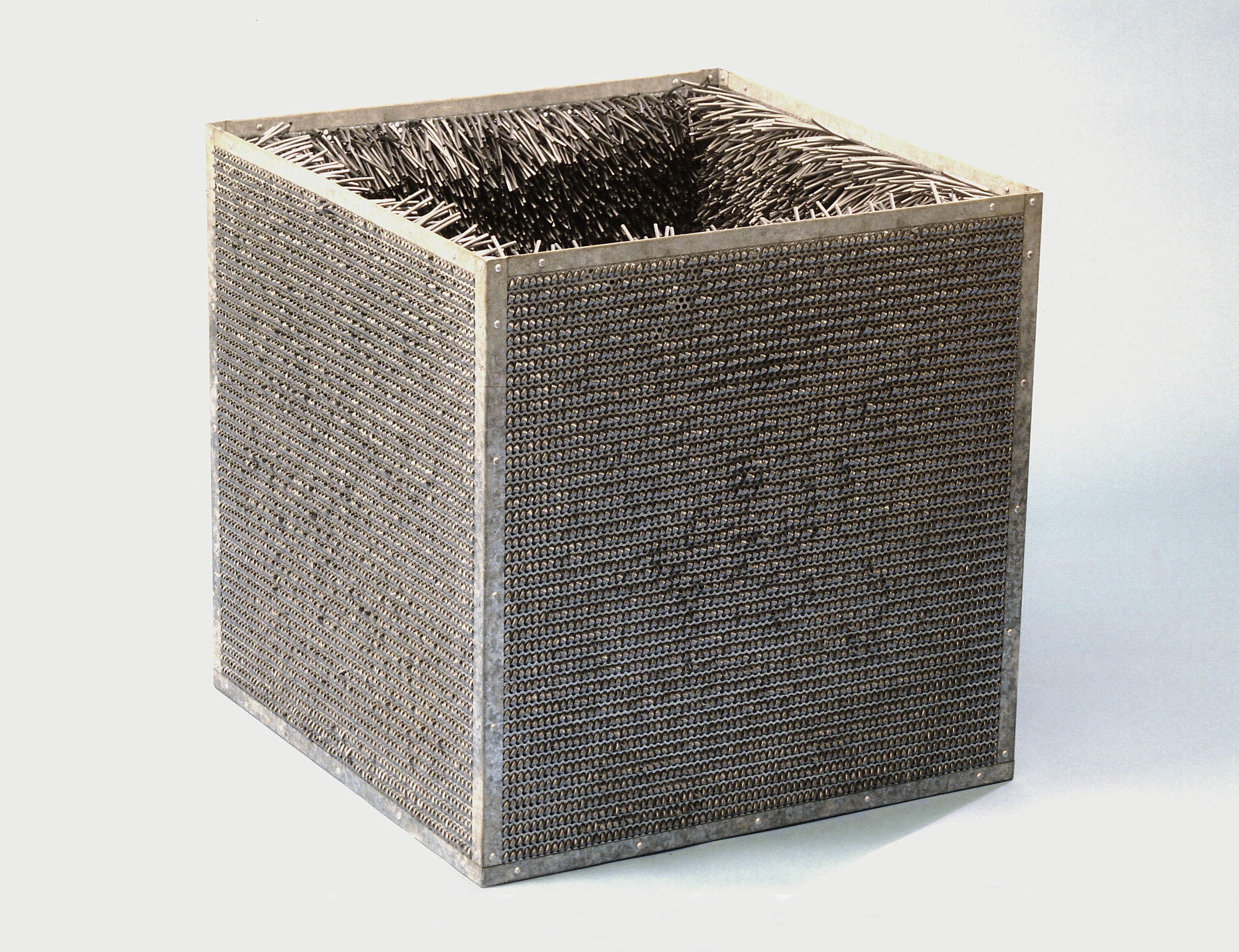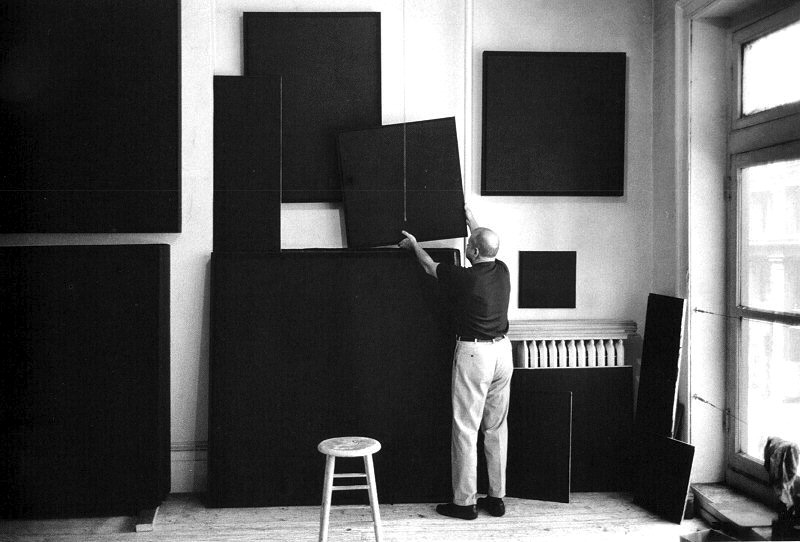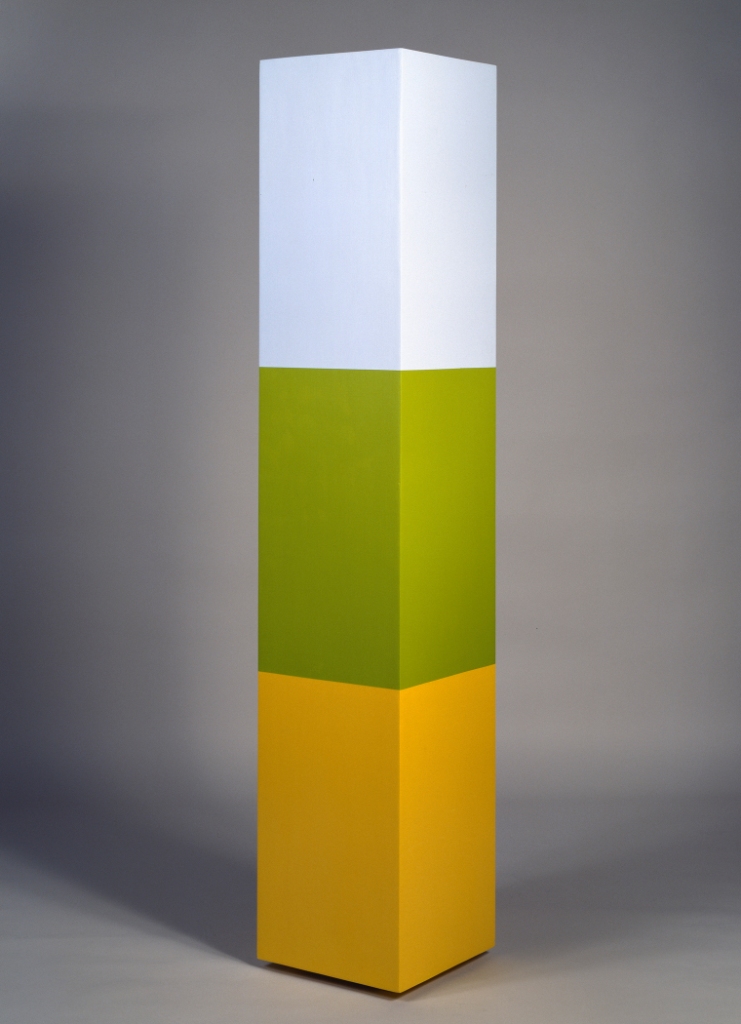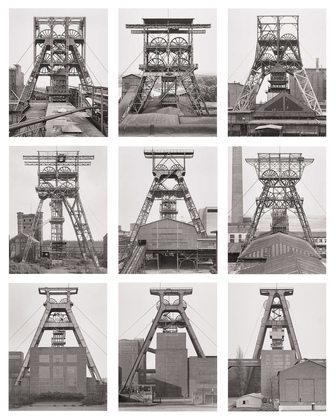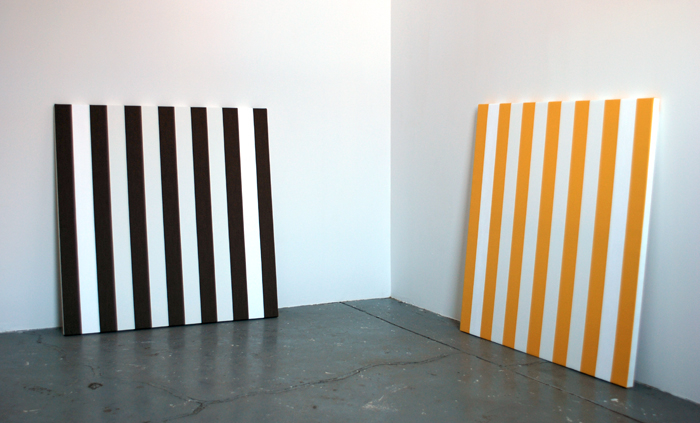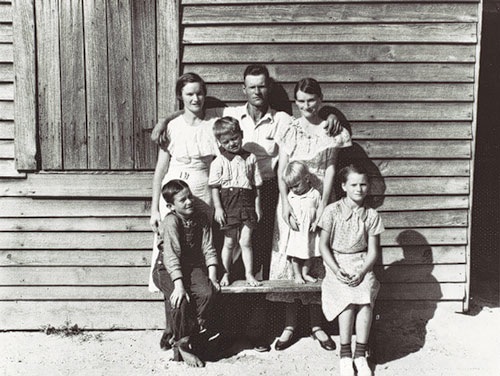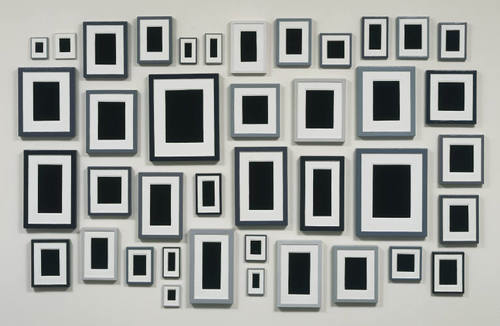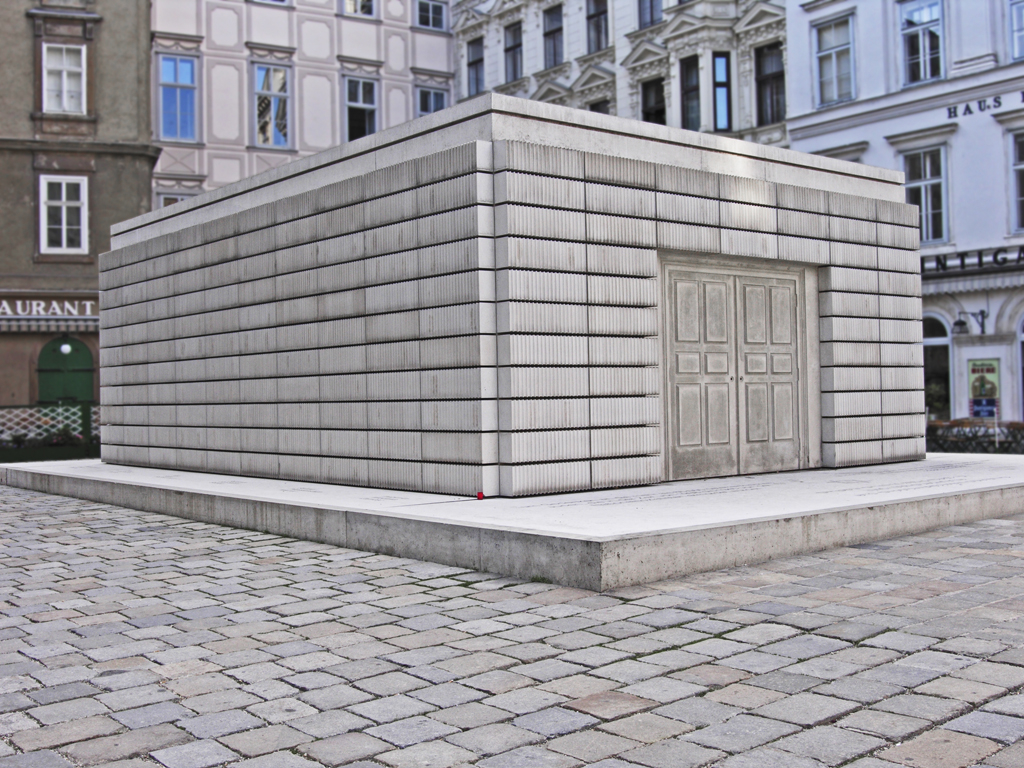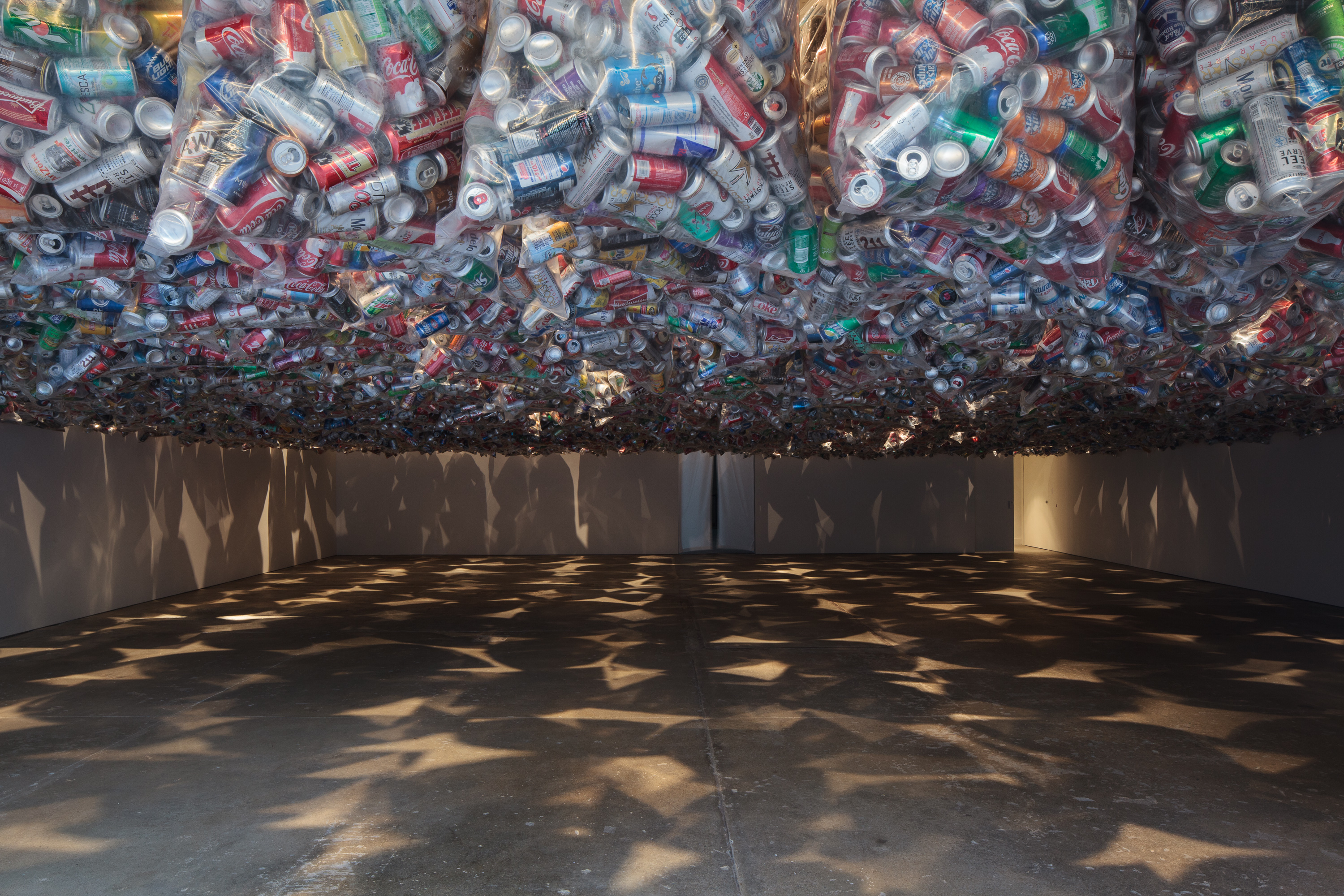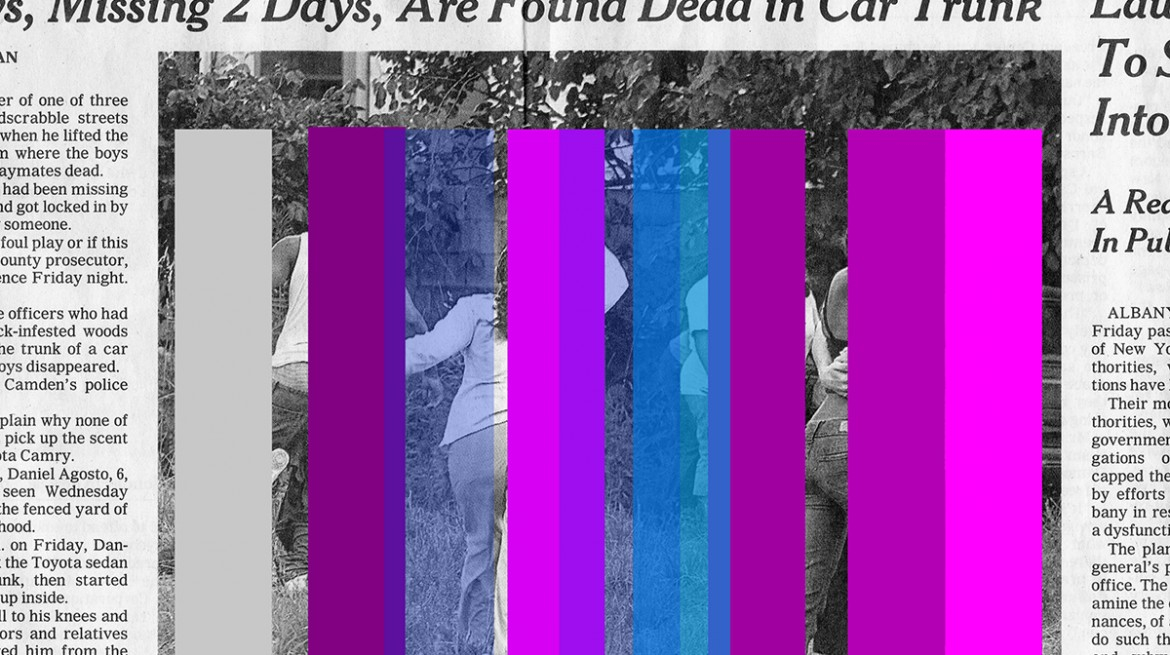Abstract. [T]he generic is capable of supporting a multiplicity of heterogeneous acts or predicates, among other things the thoughts of science and philosophy: the generic is endowed with extension but without totality or singularity, thus under-determined, non-absolute” —François Laruelle from The Generic Orientation of Non-Standard Aesthetics.
In this article I initially diagram a genealogy of the generic in order to reconsider long-held philosophical suppositions of difference and similarity, representation and abstraction and immanence and transcendence, as established in contemporary continental philosophy by thinkers such as Nietzsche and Deleuze. Next I discuss what exactly is Laruelle’s position in relation to these dialectics of difference and what constitutes his radical intentions in his Non-Philosophy and Non-Standard Aesthetics? Finally, I develop and apply possible categories of the generic through specific examples in historical and contemporary art. By ending in this way, with discrete examples of an underdetermined aesthetics, I hope to derive possible working proofs of the generic even beyond Laruelle’s theories of The Generic Orientation of Non-Standard Aesthetics.
Toward a Generic Aesthetics: A Non-Philosophy of Art[1]
Introduction: A Genealogy of the Generic
What does a generic criterion for aesthetics actually look like? Does the very idea of the generic preclude getting to any specific point or delineating any evental horizon, or does it rather allude to an undifferentiated continuity and, perhaps, the non-event? The generic can be simply defined as: “relating to a characteristic of a whole group or class, being or having a non-proprietary name, or relating to a genus” [2] But the generic can also encompass an approach to aesthetic inquiry which has a specific philosophical and poetic genealogy and that can point to a potentially useful way of approaching aesthetics in the 21st Century.
It is probably most appropriate to begin with the pre-Socratic Greek thinker Parmenides’ poem On Nature and its conception of an immutable One:
“[What exists] is now, all at once, one and continuous… Nor is it divisible, since it is all alike; nor is there any more or less of it in one place which might prevent it from holding together, but all is full of what is.” [3]
Parmenides is invoking a generic “Being”here, a poetic that stresses the oneness of nature (the way of truth) but, most importantly, not a oneness that exists independent of its attendant interpretations by man (way of opinion). Significantly, both the way of truth and of opinion are part and parcel of his poetic vision. The sequence from the way of truth to the way of opinion is important since it sets up a definite movement from the real to the possible real. Both states are contained within the thought and expression of the poem, and therefore, combined, they represent the singular expression of generic logos, conditioned by the poetic resolution of the truth with possible truths. By setting out a singular entity of poetic being in this manner Parmenides helped to establish the philosophical schema of unity organizing multiplicity for much of western philosophy and scientific inquiry. His On Nature would heavily influence Plato’s concepts of the illusory versus the ideal. The Platonic interpretation of Parmenides inverts the older philosopher’s original sequence by placing an emphasis on earthly illusion (opinion) moving to the light of an absolute ideal (the real). The significance of this platonic inversion can’t be overstated and is relevant to our subsequent discussion of the generic. How does one’s perception of the world change when all appearance, as in Plato’s Allegory of the Cave, is said to be illusory and just a shadow-play compared to the enlightenment of ideal reason? Compare this with a Parmenidean indivisible One-world. Plato’s version is one that has dominated most of Western philosophical and aesthetic thought, lending truth or falsity values to ‘the real” and ‘the illusion”, but perhaps this wasn’t Parmenides original notion. [4] And what of the space between the way of truth and opinion? Parmenides’ poetic does not admit to a notion of any gap or void that might hermetically mediate [6] the real and the simply perceived. His universe was so poetically continuous and full as to not admit any such differentiation or absence. Plato’s allegorical cave would have no place in a Parmenidean sphere. This seems the most apt universe in which any basic idea of generic being can exist: a world that declares itself already full and without the need for any mediation between the truth and falsity of this reality. The generic constitutes a radically immanent fullness that puts to rest any dialectical argument about and between an apprehension of the real.
Immanuel Kant adopted Plato’s apparent misreading of Parmenidean being as divided and objectively discrete from its likely possibilities. Kant’s posited “things- in- themselves” exist in a separate “noumenal” sphere from a knowing subject’s intuitive, a priori cognition. Knowledge and experience of Kant’s noumena are mediated by a transcendental consciousness. By introducing the transcendent mode of being, Kant theoretically wedged open a space of the unknowable, a virtual void of cognition, a mediate space between the intuitively known and the practically experienced. What is, and what is not, is not so black and white in Kant’s transcendental mediation. Kant’s un-known, in other words, is not simply a Parmenidean nothing, but a transcendent state that contains all that is possible within all that might possibly be known. Kant deployed the term “sublime” to describe anything outside of this conditionally riven consciousness as a “something” that presents itself as “an indeterminate concept of understanding”. As shall be noted later on in the essay, the opening for a discussion of the contemporary generic starts here also, at the point where determinate decision in philosophy gets jettisoned for the concept of an underdetermined withdrawal from standard philosophical understanding, yet this is a withdrawal that creates no vacuum of intentionality, no abyss of reason. What is significant about Kant’s limit of reason is that it stands at the threshold of the singular limit of the generic “something”: the “One” that has been theorized by Francois Laruelle in his own critique of sufficient reason in standard philosophical thought. Laruelle’s generic is no sublime however, as shall also be discussed later on.
Let us switch for a moment from metaphysics to physics, if just to help ground the discussion in a more scientific way. Karl Popper, the Austrian-British philosopher of science, jibing, called his associate Albert Einstein a “Parmenides” for his similar insistence on an immutable universe in his Theory of Relativity, but in a later lecture entitled “Beyond the Search for Invariants” Popper states:
“The possibility that Parmenides’ apparently crazy idea, the denial of the reality of change, may indeed define the true limits of all rationality and of all science, and confines us to the search for what is invariant, must be taken seriously.” [5]
Popper then goes on to refute the Parmenidean influence by delineating dynamic theories in physics such as the entropic heat death of the universe, countering the idea of invariant matter and the non-existence of change. What remains relevant to a discussion of aesthetics of the generic however is not fluctuating scientific theories of matter and time but the percept that there can exist no determinate boundaries between experience and its object. By abolishing time and the void the Parmenidean plane materializes solid consciousness as the basis of an invariant continuity of being.
What, again, does the invariant continuity of being have to do with the generic?
The generic as it is being defined here is, in one sense, a continuity of experience and form that aims to relegate representations/appearances to infinite categories of being, rather than have them signify actual, finite, difference to a discrete, ontological “subject”. There are no decisional thresholds in the generic household, yet there can be perceived an architecture of the under-determined which has the capacity to house all representatives of difference. The containment of difference in this instance does not imply the neutralizing or flattening out of environmental diversity; on the contrary, the form that the generic takes is shaped by a multitude of difference. It is a multitude that contradicts itself infinitely within the capacious, if potentially maze –like, architecture of a finite One.
The work of Gilles Deleuze makes a significant contribution to an understanding that moves away from representational difference toward a singularity of differences. In Difference and Repetition, Deleuze, in a nod to Kant, described his own theory of what he termed “transcendental empiricism”. This term is relevant to a discussion of the generic in that his idea of difference- and its relation to repetition- is a highly nuanced synthesis of mutable and immutable being. A unity of being for Deleuze is a unity of differences. He aligned this idea with Nietzsche’s concept of the eternal return but also with a Kantian, virtually mediated plane. Deleuze sees Nietzsche’s eternal recurrence as affirming the nature of pure difference, and he further posits as this pure difference a plurality of occurrences, a lateral, non-hierarchical field of intention than is the product of his neo-Kantian transcendental empiricism. Deleuze withholds the final philosophical decision to make of this differentiated field a cosmological totality. His work therefore stands as precursor to Laruelle’s more militantly undifferentiated generic. Both Deleuze and Laruelle set as their goal emancipation from representational thinking that, rather than point to abstract reasoning as an alternative (thereby repeating the Platonic fallacy of the illusory versus the ideal) see representation for what it is, an illustrative limit that portrays difference and repetition negatively in relation to the concept of similarity. It is this negative limit of representational thinking that the generic aims to refute. If one flips the equation, similarity retains a positive relation to difference and repetition, and therefore can be employed in a calculation that can dynamically perpetuate a fuller reasoning of the real. In other words, it is important to first get out from under the dialectical burden that perpetually distills the polarities between representation/abstraction. The generic position aims to suspend that infinite digression in favor of a finite cosmological totality that encloses both philosophical decision and dialectical determinism. It follows that any hard line between abstraction and representation dissolves in an ab-solution of finite similarity rather than a sophistication of infinite difference. To take an example from contemporary art, Andy Warhol’s processes, which on their surfaces enact a Bejaminian [7] notion of mechanical reproduction and repetition, dilute any qualities of unique difference inherent to images as diverse as electric chairs to movie stars and reposition these representations into a schema of sameness. In doing so Warhol invokes a Parmenidean poetics that conflates the way of worldly opinion (The Daily News) together with the way of aesthetic “truth” (Art).[8] This idea of how the technical image helps to augment and accelerate the collapsing of dogmatic categorical distinctions between similarity and difference will be explored in greater length in our discussion of Vilem Flusser’s work later on in the seminar. At this point we can just let the Warhol example stand as an instance of the generic at work at the very site of the multiple. Deleuze references Nietzsche’s idea of the eternal return as affirming the notion of “pure difference”. For Deleuze the eternal recurrence of every universal event affirms that “the real” is comprised of a continual “becoming”. Nietzsche’s philosophy affirms the idea that for him difference and repetition expresses the nature of being in process/ becoming. He compares Nietzsche’s concept of the eternal return to a sphere in which difference takes center and sameness is peripheral. For Deleuze the eternal return implies a plurality of centers that make whole a world of difference. Similarly for our purposes, the notion of sameness that the idea of the generic calls forth is not a simply undifferentiated plane but more a container, like Parmenides poetic resolution, of all possible truths, differences. The generic in a Deleuzian sense is therefore a capacious and open-ended process rather than a category that necessarily reduces difference to similarity.
Laruelle and the Generic
Enter Francois Laruelle and his carefully delineated insistence of the attitude of the Non-Philosopher. Laruelle’s Non-Philosophy sets its sights on seeing beyond what he describes as traditional philosophy’s principle of sufficient reason [9] toward a more comprehensive dissection of the modes of philosophical difference. By stepping outside of the determinist narrative of successive “turns” of philosophical difference, Laruelle hopes to gain an objective viewpoint on how western philosophies have retained a representational dialectics even in the attempt to disperse representational thinking. Laruelle typically capitalizes the term Philosophical Decision in his writings to underscore how this type of thinking marbles the meat of traditional philosophical discourse in a deferential way to set up agonistic battles of dogmatic, “reasonable truths”, rather than get to any point of realization of objective reality. Laruelle sees himself as a scientist of the philosophical discipline, a discipline moreover placed by him in the wider scope of other disciplines including physics and contemporary aesthetic theory. By leveling out the differences between these categorical disciplines, Laruelle enacts the generic principle himself, as he states:
“Thus a multiplicity of presentations of non-philosophy is possible, and this testifies to its plasticity and its universality rather than to a formalism. In this sense it would be of the order of an organon. [10] For example, because of this new (generic) universality, that of real identity, it cannot assume one hypothesis of the Parmenides over another, except as mere material. The hypotheses of the Parmenides are retained entirely within the horizon of transcendence or the ontological predication of the One.” [11]
In this statement Laruelle commences to correct the Platonic rivenness and misunderstanding of the Parmenidean sphere to arrive at his concept of a radically immanent One. His understanding of the “all being full of what it is” qualifies traditional philosophical “turns” or decisional advents/events as nothing more than multiples of representations of difference that disingenuously fail to take into account their basically undifferentiated relation to the whole, or their real relation to the One. He further elaborates the implications of this point:
“This change in the status of a transformed Parmenides supposes a re-elaboration of non-philosophy’s style of hypothesis…. Ultimately the emergence of a non-Parmenidean thought is not that of an anti-Parmenidean philosophy, but firstly supposes the introduction of a new ‘point of view’ or experience- of- the- real that can never be obtained by philosophical operations”. [12]
Laruelle explicitly acknowledge the Parmenidean influence on subsequent philosophies of transcendence such as Kant’s, while turning historical philosophical heritage on its head, and gives this example:
“The main axiom of non-philosophy can be formulated in entirely quasi-Kantian terms (nevertheless remaining not anti-Kantian but simply non-Kantian): if immanence is truly radical. If it is truly identity, then it must be, as much as “the thing in itself”, but not in the same way (though immanence rather than transcendence) absolutely devoid of any determinations or predicates rather than its identity, which is not a simple predicate in its essence or its content alone, but identity through and through”. [13]
As he has with Parmenides, Laruelle acknowledges Kant’s influence in the critique of pure reason specifically (and on continental philosophy in general) without being beholden to a precedent that might cause him to get in formation with a grand narrative stitched seamlessly together into yet another representation of the real. Laruelle positions his non-standard model as the ultimate in non-representational thinking, therefore foreshadowing (in retrospect) such major figures of philosophies of difference such as Nietzsche, Heidegger and Derrida. In his book The Philosophies of Difference he openly rejects the dialectical model of synthesizing two opposite viewpoints as a bad habit of what he terms the “ Greco-Occidental” or “Judeo –Occidental” style of philosophical reason by formulating:
“A critique that would no longer be a compliment, a rectification, a deconstruction, a supplement, one of these innumerable “experiences” (through Being, Text, Power, Desire, Politics, Ethics) that the Occident has invented in order to cleanse itself of its congenital defect- to think through unifying duality, through a synthesis of contraries, through the One as All or as unity of contraries, through dialectic and difference-and through which it would be content to re-infect the wound”. [14]
It can be astonishing to fully grasp the extreme hubris of a statement like this, iterated by Laruelle as far back as 1986, prior to his more fully developed program of Non-Philosophy in the present. Perhaps this was the necessary escape velocity for him to conceive of a mode of thinking unfettered by the interminable tennis match of dialectical argument that has characterized most post-war continental philosophy. For our purposes in figuring what and how the generic comes into being and is evident as an influence on contemporary aesthetics, Laruelle’s radical declaration of independence from the dialectical model helps to make clear a way to identify the generic with the real without thinking of the real or ourselves as contingent points of argument for the generic. In other words, in Laruelle’s “vision-in –One” there is nothing to turn ourselves inside out to “get at” other than the One itself, or a radically immanent real. He sees this vision not so much as an option or another philosophical “turn” but more as a necessity due to a:
“…congenital decline of philosophy- a decline which is neither its death nor its end- (and that) non-philosophy opposes not the beginning of a new philosophical position, but the undertaking of a unified theory of science and philosophy, unified under minimal conditions”. [15]
In this statement Laruelle is careful to qualify his non-philosophical method as one expressly underdetermined in relation to previous philosophical decisions or turns and as a mode that is unified only under minimal conditions. This underdetermined and minimal aspect of non-philosophy is a quality it shares and expresses in an aesthetics of the generic, a quality which we will now explore in art historical and contemporary visual examples.
The Generic Impulse : An Aesthetic Survey
In this section, I extrapolate a working set of generic categories, which include: un-differentiation, the vernacular or common, everyday (and the related non-eventful), continuity of form (gestalt), disarticulation of logos-form ( “endiothetic” logos), the underdetermined, sameness and repetition, and the im-mediate.
While these examples might on the surface share stylistic similarities or difference, they all contain some aspect of the generic impulse that will both qualify and bring into question a trans-historical recurrence of generic “being”. The trans-historical, discursive, nature of this survey might horrify a traditional art historian in its metapsychic leapfrogging around social epochs and aesthetic paradigms and periods, yet it might also help clarify the universality of the generic through a snapshot collation of its “possible truths”.
I will begin by showing what is arguably the monument of Realist painting as intentional generic presentation in Gustave Courbet’s, A Burial at Ornans, (1849-50). The painting depicts an actual event in the painter’s life, the death of a friend in the artist’s hometown of Ornans, yet the specificity of the event is made under-determinate by both the artist’s composition and his method of re-presenting the event as a universal “non-event”. To paint the picture, Courbet relocated his studio to Ornans and recruited as models the actual participants in the funeral cortege depicted. [16] In scanning the image either from left to right or back again, one quickly assimilates the crowd scene of minimally- differentiated individuals (especially in terms of scale) pinioned on a central fulcrum of the dug grave. Courbet eschews the hierarchically organized ideal of the pathetic event for an undifferentiated mass of multiple “common folk”. The void of the grave is not that of the idealized sublime or the abstract nothingness that lends weight to humanity’s tragic dimension but simply a hole in the ground, a prosaic ground that contains only what immanently expresses “identity”. The generic intention for Courbet was intertwined with his autobiographical specificities and his political generalities, and particularly related to those of proto-anarchist and socialist theorists such as Proudhon and Fourier. [17] In his relation to the progressive social theory of his time, Courbet modeled the residual influence of French socialist thought still present in contemporary continental theories such as Laruelle’s. The artist’s studio re-enactment of the burial also predicts the re-enactment of social events in the work of such contemporary artists as Jeremy Deller and his representation of the Thatcher era miner’s strike in his “Battle of Orgreave” (2001). The mediated distance between the real and the representation in Deller’s work seems more of the subject of his aesthetics than Courbet’s perhaps naïve insistence on the real, yet “A Burial” remains a singular statement of the trans-historic generic in comparison to “The Battle”. What distinguishes the two has to do with the latter’s play of perpetual dialectics of historical difference versus Courbet’s more obdurate statement of prosaic similarity. The question of differing interpretations of the generic is an important one that will continually be explored throughout the seminar. In “A Burial” Courbet established a literal and figurative vacuum of metaphysical hermeneutics that throws the spectator perpetually onto what is, rather than what can ever be. It is a finite universe that the artist depicts yet one monumental in its persistence. Yet another definition of the generic might be centered on this concept: What retains radically immanence simultaneously remains radically present. In Fear and Trembling, Søren Kierkegaard makes a clear connection between the im-mediate (contra the mediate, or a potentially mis-communicated message) and aesthetics [18] that positions the present real as preceding faith as a category of experience. Aesthetics is the immediate in Kierkegard’s reckoning, a quite radical point of view from a proto-existentialist “believer”, but perhaps an apt description of Courbet’s aesthetics of the generic (his immediate real) in “A Burial at Ornans”.
In the early twentieth century, August Sander went about photographing generic types of his German countrymen in a flatly affected way that recalls the work of some contemporary German photographers like Thomas Ruff. His will toward the “scientific “archive of his world de-emphasized the aesthetic and in so doing underdetermined the philosophical representation of difference in favor of a study of variation within similarity. Sander’s methodology expressed an almost Darwinian objectivity toward his subject that still resonates with viewers today in its crisp and dispassionate vision. He practiced the generic within the limits of his own generic preconceptions of the German “volk”, yet, curiously, in such a way as to preclude the solipsistic and sentimental schema typically associated with nationalist rhetoric.
Kasimir Malevich’s Black Square (1915) threw down a non-objective gauntlet for a stake in the abstract real. Courbet’s immanent void now occupies lateral space in Malevich’s conceptual composition, further robbing the metaphysical grave of any “tragic” dimension of the real. Malevich’s composition encloses a metaphysical Russian consciousness within an immediate and revolutionary poetic universe. Black Square is an artifact of the generic real conditioned by a uniquely Russian transcendence-in- the -last- instance. Despite the work’s often being atavistically held up as an example of a ground zero refutation of the real, Black Square can be more productively recast as a generic icon, rather than an icon of the Modernist generic. The work’s immediate aspect refuses its use as a traditional vehicle of spiritual mediation and transport: the hermetic is arrested in the immediate and generic immanence of the painting, therefore it makes for an underdetermined and weak icon, a leaky container for transcendence, a weak universalism. [19] Black Square should be see for what it is, not a symbol for an ascetic reduction of empirical truths, not a pure or purifying abstraction in other words, but an icon for the non-dialectical [20] and immediate real. What is truly revolutionary about the painting is that it repositions the argument of representation vs. abstraction to a level of “empirical transcendence” that makes that well- worn argument fairly moot. Malevich’s revolutionary gesture is universal in a Deleuzian sense and virtually embodies the generic in the Laruellian sense. In sounding a weak universalism, Black Square generates a strong generic wavelength. Therefore the painting, rather than being a singular representative event heralding the death of representation is, in its actuality, simply, “One”, and yet its presence/ absence fluctuates as a wave- form in the field of the generic real. This idea of a recurrent series of non-events is no cosmic throw of the dice however, since no specific, decisional outcome is anticipated in a game with no categorical imperatives, no codifying rules of engagement. The generic only maintains its reality in its capacity to step outside of the metaphysical game in a non-metaphysical move toward the concrete resolution of immanent being. Perhaps what Deleuze meant by his term of “empirical transcendence” is the paradoxical capacity for the generic to be both really- engaged and metaphysically “a part”.
Marcel Duchamp’s Bottle Rack (1914) one of his first “Readymades” takes the generic glance of quotidian occurrence seriously as well as eludes the burden of aesthetic decision in regards fabricating an artistic ideal in one’s head and then realizing it as an appearance of that ideal. By finding sculptures in the real, Duchamp predicts Laruelle’s apperceptive concept of “vision-in -one” as a practical mode of presenting sheerly immanent objects- in- the- world. The fact that Bottle Rack is a multiple, mechanically produced, is important to Duchamp in that the question of “difference” would never be asked of such a repetitive cycle of objecthood. Of course one could argue that Duchamp’s choosing to declare the bottle rack his art represents the differentiation of the object from the quotidian and into the aesthetic ideal, but it is this very gesture of translation, of aestheticized mediation that Duchamp appears to refute. His bottle rack is like every other bottle rack, a generic construction that maintains a perfectly immanent form in the real, despite being singled out by the artist.
In addition to repetition, difference, and similarity, the generic shares a special relationship to chance, since in an undifferentiated universe the odds would be eventually quite predictable, since any variables would dissolve in it’s underdetermined whole. Duchamp played with chance ironically as a “standard” in his Three Standard Stoppages (1913-14). Jean (Hans) Arp employed chance operations to arrive at his poetically simple compositions and reliefs. This dependence upon the aleatory as a “given” to materially generate form relates to Laruelle’s take on the given, which he re-calibrates in his non-philosophical method as the “given –without- givenness. Laruelle explains this concept as: The sphere of “reality” which is non-real or real-in –the –last-instance and comes after the given, (which) will globally be called Givenness, and therefore thought’s transcendental essence which finds its cause in the One-Given”. [21] To roughly translate how this may relate to Arp’s Untitled, Collage Arranged According to the Laws of Chance (1916-17), by employing the laws of chance one calls forth a universal givenness, rather than taking compositional propriety for granted (a traditional “given”) In calling forth a universal givenness the artist avoids making his decision about how the composition might “fall”, one that would limit it’s finitude (ironically) to the caprice of chance, which in any case can’t possibly exist in a generic and undifferentiated universe.
Tony Smith’s Die (1968) has often been, like Black Square, considered as a milestone of reductive formalism, and/or a monument to the rhetorically minimal. However if we reconsider the work in relation to the generic another set of “possible truths” opens up, like Courbet’s realist- grave. One can consider the title,“Die”, as a mortal imperative but also a machinist die, or reproductive form, and also one of a pair of dice. Smith himself acknowledged the mortal aspect of the work’s title choice and in doing so put to rest any questioning of his intention toward finitude in conceiving the work. If one considers the other two allusions, these bring us back into a discussion of difference and repetition and the relation to chance that Alain Badiou, Gilles Deleuze and Francois Laruelle hold respectively. Smith’s autobiography includes the facts that he was both the grandson of AP Smith, a waterworks parts manufacturer (employing die- casting) in Newark, NJ and an avid gambler. A “die” for Smith was a mortal imperative but also a regenerative form, a “castable void” as well as one of a pair of gambler’s variables. The former is an allusion to a full (and potentially full in perpetuity) gestalt, the latter an allusion to a truncated game of chance, since the die’s “other” only exists as a form in the mind and is not pragmatically “castable”. Smith’s “Die” therefore embodies the impossibility of chance as anything but contained by the castable real. For Badiou, who sutures mathematical set theory onto his theory of being and event, a throw of the dice represents a mathematical calculation of infinite possibilities which would become event-full only by acknowledging any specific “cast” as a subtraction from that game, an isolate signifier of chance, that could then be used to bet on “the ideal outcome” staked by one’s fidelity as a faithful gambler. Badiou’s mathematical outcomes, [22] or subtractions, therefore remain symbolic of the appearance/reality allegory of Plato in that they are abstracted from, (subtracted from) the wholeness of a world of possibilities. In contrast to Badiou’s casting technique [23], Deleuze would only roll once [24], and in that one roll he would embody his philosophy of the many in the one, or multiple irruptions and possibilities, a rhizomic field, as generated by one shared root (cast) of possibility. Laruelle would never cast, withholding the die as a radically immanent, sheer potential ( somewhat like Smith’s ultimate intention in his sculpture) in order to evade the necessity of philosophical decision for the greater goal of acknowledging the pre-immanent One. In a sense Smith’s single die, fully cast yet impossible to throw (or project, like quantified shadows on a platonic cave wall) is a figurative representation of Laruelle’s “Vision-in-One””. Both the artist and the philosopher call forth from the generic a multiplicity of readings, rather than a fixed thesis, acknowledging the “unfaithful science” of aesthetics.
Eva Hesse’s Accession, (1968) replicates the form of Tony Smith’s cube but radically transforms his disarticulate and formal solid into a highly articulated and open-ended whole. One perceives the gestalt of Hesse’s work initially but then gets caught up in its interweaving of latex tubing through latticed planes that then terminate, cilia-like, into the interior space of the sculpture. The organic, bodily references are implicit in almost all of Hesse’s oeuvre, yet they are typically fabricated from industrial materiel that tends to qualify the simple appearance or allusion to the body as something less than representational. In choosing her industrially ready-made materials Hesse recalls Duchamp’s method of letting the generic speak for itself. In approaching a bodily metaphor, yet abstaining from figurative language, Hesse makes explicit her desire to subsume appearance within mechanically articulated processes, thereby displacing the self as simply organic identity and making of Being an “empirically transcendent “whole.
One of Hesse’s contemporaries in the dance/performance world of the late sixties was Yvonne Rainer. In a statement on her Trio A, The Mind is A Muscle (1966) Rainer has said she was intent in her choreography on “the smoothness of continuity”. Writing on Trio A, Carrie Lambert notes that the work “suppresses both difference (the differential values of the parts of the phrase) and differentiation (the ability to discern phrases themselves) and the effect… is an insistent leveling of incident.” [25] Similar to the base, quotidian movements in Merce Cunningham’s work and perhaps in response to concurrent theoretical developments in the minimalist sculpture of Donald Judd and Robert Morris, Rainer’s Trio A expressed the solidity and weight of being as a generic inevitability, continuous with all that the universe contains.
Ad Reinhardt ‘s, Black Paintings series (1963-66), might, as a group, be seen as the “ultima thule” of generic painting, abstraction’s dark apotheosis with barely differentiated and repetitive compositional schema. Alex Galloway, in his Laruelle: Against the Digital singles out this series as not representative of the generic “blackness” called forth in Laruelle’s “ science (which) begins from the posture of the black, communing with the agnostic darkness of the real” He portrays Reinhardt’s works in this instance as “ merely reflective, merely metaphysical, merely philosophical”. [26] Galloway’s characterization seems harsh, but aptly describes the unequivocally demanding rigor of the generic instantiation which Laruelle propounds.
As a member of the Situationist International, Giuseppe Pinot-Gallizio promoted his idea of “industrial painting”, yardage of canvas that might overcome and subsume the differentiated and bourgeois rectangle. By adopting the mode and processes of mechanized production Pinot-Gallizio hoped to overcome the singular authority (or fidelity to the event) of a discrete painterly composition. His approach was generic in method if not always in its figurative outcome, which tended toward the anthropomorphic “automatic writing” of surrealist expressionism.
Anne Truitt’s sculptures such as A Wall For Apricots (1968) maintain a strong generic presence. Her minimally articulated yet variously colored works “offer the insight that the real cannot be reduced to ontic materiality, our everyday understanding of the real.” and “reveal there is no logical space of infinity”. [27] The poly-chromed planes of Truitt’s works express yet another register of the generic, that of the associative occurrence, or the finitely circumscribed palette of everyday, present memory.
Ed Rucha’s highly influential Every Building on Sunset Strip (1966) photo-publication combines aspects of the vernacular, the “Strip’s” weakly modernist and prosaic architecture, with a continuity of form (the layout), and the im-mediate (in a human sense) eye of the camera.
Bernd and Hilla Becher’s, Winding Towers Belgium,Germany, (1971-91) embodies the generic in its austere grid format (continuity of form) and its attention to vernacular detail that nevertheless melds into a category of sameness with constant repetition of those details. The artists disarticulate the previously differentiated in their clinical approach to what Laruelle terms Vision-in-One.
Seascapes, (1972), sheet 200, from Gerhard Richter’s “Atlas” project, a massive archive of over 4000 images that the artist has collated and archived to help inform his painting practice, represents the sameness and repetition, the continuity of form (grid and rough-grid format) and vernacular attributes of the generic. These attributes infuse both his figurative and abstract paintings.
Dan Graham has acknowledged the influence of the architects and theorists Robert Venturi and Denise Scott Brown in his interest in the disarticulate forms of vernacular architecture. His Newly Constructed Houses in a Development, Bayonne, NJ, (1966) embodies that influence and also the influence of his contemporaries in the so-called Minimalist period, such as Carl Andre and Robert Smithson.
Lewis Baltz, together with Robert Adams, Steven Shore and others, became grouped together as “New Topographic” [28] photographers. The “Man-Altered” aspect of the landscapes captured by Baltz present the disarticulate and common fabrications of the manufactured American landscape. His Public Places, Berkeley, California (#1A), (1972) has a (paradoxically) strongly- generic feeling.
Blinky Palermo represents a generation of artists influenced by the ideas of social sculpture promulgated by Joseph Beuys in the late sixties and early seventies. This idea of the commons informs the flat affect of Palermo’s Coney Island II, (1975). The serial nature of the repetitive form and seemingly programmatic color is offset by the everyday specificity of the work’s title. Palermo therefore reinvents abstraction as a series of signs for the real.
Daniel Buren has similarly used a disarticulation of form to express a commonality of intent. Together with Olivier Mosset, Michel Parmentier and Niele Toroni in a collective named for their respective initials, BPMT (1966-67), Buren critiqued the traditional presentation of art, and the post-war spectacle of the contemporary avant-garde as institutionally repressed. His mechanically- derived (originally from “readymade” awning material) stripe pattern works give the impression of infinite variations of sameness, an ultimately undifferentiated gesture toward the reality of continuous (and common) being.
BMPT showed that the deployment of the generic held the possibility of an emancipatory politics, or at least a freer, less -determined aesthetics.
Andy Warhol, as noted before, used mechanical reproduction as a means to grasp a generic reality that for him represented a kind of “empirical transcendence” from individuation in favor of an immersive, perhaps even oceanic experience of the whole of the commons. His Shadows Paintings, (1978-79) don’t even include the populist imagery he has become more well known for but only the minimally effable trace of the generic gesture. In format and concept this work could be seen as finitely within the verge of radical immanence. Platonic shadows become embodied surface, expressing the Parmenidean idea that “all is full of what it is”.
Sherrie Levine was a member of the so-called “Pictures Generation” [29] that included Cindy Sherman and Richard Prince. Her appropriations (perhaps Laruellian clones?) of famous photographers of the American vernacular genre are of interest here in that the multiplication of superimposed layers of the generic seemed to be an important formal strategy for Levine and her contemporaries. The Evans image, by the time Levine appropriated it, was over-determined as both the official record of the vernacular (it was taken on assignment for the Farm Security Administration) and yet underdetermined as an aesthetic object (in the sense that photography was considered an aesthetic category as much as it has become). Levine’s intervention adds another layer to the generic, that of the readymade aesthetic, hearkening back to Duchamp. In addition the mechanical reproduction and proliferation of Evan’s images make them “weakly universal” since the repetition delimits the empathetic affect (Benjamin’s aura) of the original.
Allan McCullom’s Surrogates. (1982) enact repetition and sameness, mechanical “casting”, and non-representational presence.
Thomas Ruff’s collated portraits of his friends, as in and associates as in Portraits of D. Mueller, M. Baer, Michael Von Ofen, M. Klarner, Bettina Ebert, Johan Zoering, Manfred Hermes, Martin Vossing, Melanie, Lukas Duwenhoegger, Pia Fries, Heinz Hausman, Tanja Braster, Gerd Belz, Holger, Andrea Kachold, Axel Huette, Peter Maertin, Carol Pilar, Julia Renzel and Bertram Job, (1986-88) recall both Sander’s generic types and Richter’s diaristic “Atlas” project.
Gerhard Richter’s process of painting his abstract works resembles that of mechanical processes, making of the human gesture only a conditional property. These painting are variously the same in their intentional generic formation.
Cady Noland uses the ready-made, interchangeable machine parts of cyclone fencing in Industry Park, (1991) and prosaic cardboard in Not Yet Titled, (1996) to create what amounts to non-sculptures out of what she has termed an “American gestalt”. Her material use of silver as an overriding palette has been commented on by Lane Relyea, who noted that: “Chrome and aluminum are perhaps America’s richest symbolic materials, more capable than stone, brick, or steel of grounding our culture’s myths. The matter-of-fact reality of these metals appears to have been transformed (in Noland’s work) into something more indeterminate”. [30] Noland’s sculptural indeterminism, its generic impulsion, clones effortlessly from the under-determined (literal and figurative) American landscape.
Rachel Whiteread makes of the voids in her everyday experience “castable” solids. Like Tony Smith’s filling of the die, she explicitly “outs” the netherworlds of the world. Her work House, (1993) entails a mold making of “nothing” and therefore imparts a threshold-less sameness of ontological being to the architecture of a prosaically manufactured dwelling.
She extends this phenomenon in Holocaust Memorial, Judenplatz, Austria, (2000) creating a virtual library containing unreadable (disarticulate) books in a monumental “die” cast from the memory of the industrial slaughter of the Holocaust. Here the deployment generic takes a sinister turn: un-differentiation as depersonalization, as theft of an articulate identity.
Steven Parrino’s, The No Title Painting, (2003) two sheets of industrial sheetrock painted glossy black and broken, exhibit the pathetic or abjection of the generic, as well as critiquing the traditional rectangular forms of (blackly/bleakly) non-objective paintings.
Liam Gillick’s Untitled, (2001) is one of his more simple pieces that typically take as their inspiration the mass- marketed office furniture and fixtures of an increasingly, technically administered society. Gillick underdetermines this source material in an attempt to “make plain” both the tyranny of conformity and also the possible emancipatory nature of the minimally articulated commons.
Jessica Stockholder’s conflation of painting and sculpture in such works as Untitled, 2003 depends squarely on a method of disarticulation of form and the use of the vernacular as support. In a wholly different way, John Armleder adopts the prosaic (readymade and mass-produced) tabletops in Untitled, (2008) to form a relational composition of color and form that clones the format of “formalist” abstract painting. The Bruce High Quality Foundation’s, Perpetual Monument to Students of Art (2010) makes a similar gesture toward cloning the form of minimalist sculpture while infusing the work with a socially- sculpted process of substitution. Each newly- fabricated pedestal made by the collective was exchanged for older ones in New York area schools, making the piece a generic register of the “given-ness” of social barter and possible gift economies.
Claire Fontaine, another contemporary artists collective that often addresses social issues of market economies and their social impact, fabricated “Angoisse” twenty security guard hats (2008) from commercially available multiples that were then “detourned” or radically modified to contain the message “Anguish”. The group therefore uses the repressive generic, the theft of articulated agency in commodified being against itself to underscore the pain of conformity. In Redemptions, (2013) the group deploys masses of soda and beer cans levitated in clear plastic garbage bags in a room -sized installation that references the homeless activity of redeeming the discarded containers of commodity culture for a marginal existence. The generic in both pieces is used as an under-determined container to deliver a highly- politicized message.
John Miller’s collaborative with Takuji Kogo, named Robot, produced a series of videos in 2010, like A Little About Me, that overlay different layers of the generic: cut and paste stock imagery with personal ads. Thus they amplify the additive pressure of the undifferentiated commons in order to critique the necessity of human desire as commodity. There is a surprising pathos to this layering attended by a Philip Glass-like score and robotic speech.
Andrea Zittel has made a gesamtskunstwerk of her life’s daily necessities, clothing, habitat, décor, leading a type of neo- luddite existence. Her contemporary crafted generic, as seen in an installation of Fluid Panel State (2012) is reminiscent of Anni Albers austere Bauhaus graphics and textile designs, expresses the necessity of controlling the means of production, of keeping them domestically “on hand”.
Michele Grabner will often take her cues from the quotidian domestic also. In her series entitled Cottage Work (2012), Grabner stretches the patterns of commercially available (readymade) dishtowels and tablecloths in the continuous form of the grid. Her generic is suffused with the humble chore of showing up for everyday being.
Mona Hatoum’s Twelve Windows, with Inaash (2012-2013) was fabricated in collaboration with a women’s organization established for Palestinian refugees living in Lebanon. Each hand-embroidered window represents a key region in Palestine. Hatoum and her collaborators make global the presumption of domestic security- via vernacular means.
David Hammons’ Snowball Piece (1983) humorously enacts difference and repetition in the contingent commonality of marginally differentiated snowballs. His role as ostensible street vendor of perishable “goods” parodies the commodity market with a decidedly flat-footed flourish. His works have long since moved from the flux of the New York streets to the more determinate spaces of museums and galleries. Hammons uses each of these venues as strategic platforms to express his boilerplate tactics. With his 2011 installation of wrapped “paintings” at L+M Arts in Manhattan’s upper east side he presented canvases that looked as if they had been retrieved from a hurricane in an art mover’s warehouse. These works, like Melville’s Bartleby, “prefer not to” engage in the proprietary rules of representational aesthetics. This refusal is less a strong “no” however but a weak and abject appeal that opens up another world of possible truths. [31]
Jacob Kassay takes a strongly generic stance in a weakly poetic way. Recently classed along with a few other contemporary painters as a “zombie formalist”, Kassay’s work in truth reminds one of the beautifully facile gestures of Richard Tuttle or the lush yet quiescent surfaces of early Brice Marden.
The generic principle is central to my own work, as in Survey, 2012 whether it is in painting, photography or sculpture.
Doug Ashford is better known though his association as a member of Group Material. Recently he has focused on combining generic abstraction with images from quotidian sources such as newspapers. In his layering of the general with the specific, as in Untitled, 2011, Ashford hopes to evoke an empathetic response.
In the March 2015,“Spring Break” show, held at the historic post office on West 33rd Street and 9th Avenue in Manhattan I found examples of the generic aesthetic in widely varied permutations. Ivin Ballen’s Untitled, 2014, from a group show entitled “The Ecstasy of Influence” recalls the aleatory aspect of Jean Arp’s works and includes as part of its fabrication the casting (cloning) process. Also at the same venue I came upon a group installation organized by the Sorry Archive , curated by Amanda Thill and Claire Mirocha. The assembled works expressed the generic in deploying the abject vernacular, but also in recombinant strategies for de-differentiating sub-pop trends of identity marketing. Stephen Zerbe’s, Transformational Apparel Gradient, (2014) is a good example of this.
Jo Shane’s installation of three bug zappers together with a pile of empty prescription containers at “Spring Break” plays the readymade off of the industrial augmentation of organic being.
In conclusion, an across –the- board application of a generic aesthetic is not really what is significant in this present discussion, since that is not the same as a fundamental shift in how one perceives the tension between truth and appearances. Whether or not a slackening of that tension can yield interesting models for thinking about contemporary aesthetics is the more important question. Francois Laruelle’s Non-Standard Aesthetics derived from his Non-Philosophical methods shouldn’t be read as a road map toward generic emancipation, but rather as a prompt to dissolve the discrete boundaries between the abstract and the representative and how this dissolution has the potential to influence aesthetic (and perhaps political) priorities away from the mere replication of alternate worlds/ selves and toward a consolidated vision of a collectively underdetermined world/identity.
